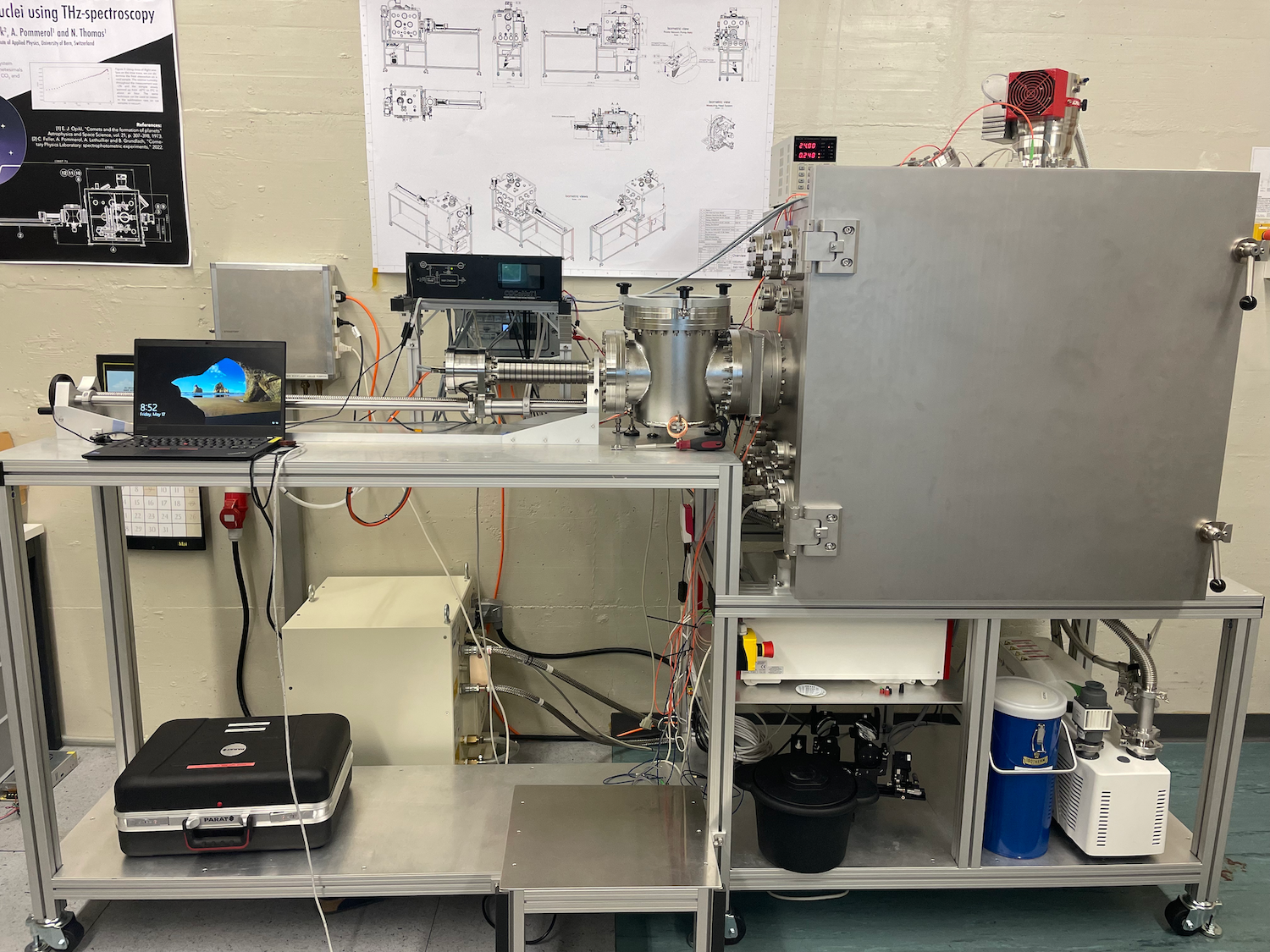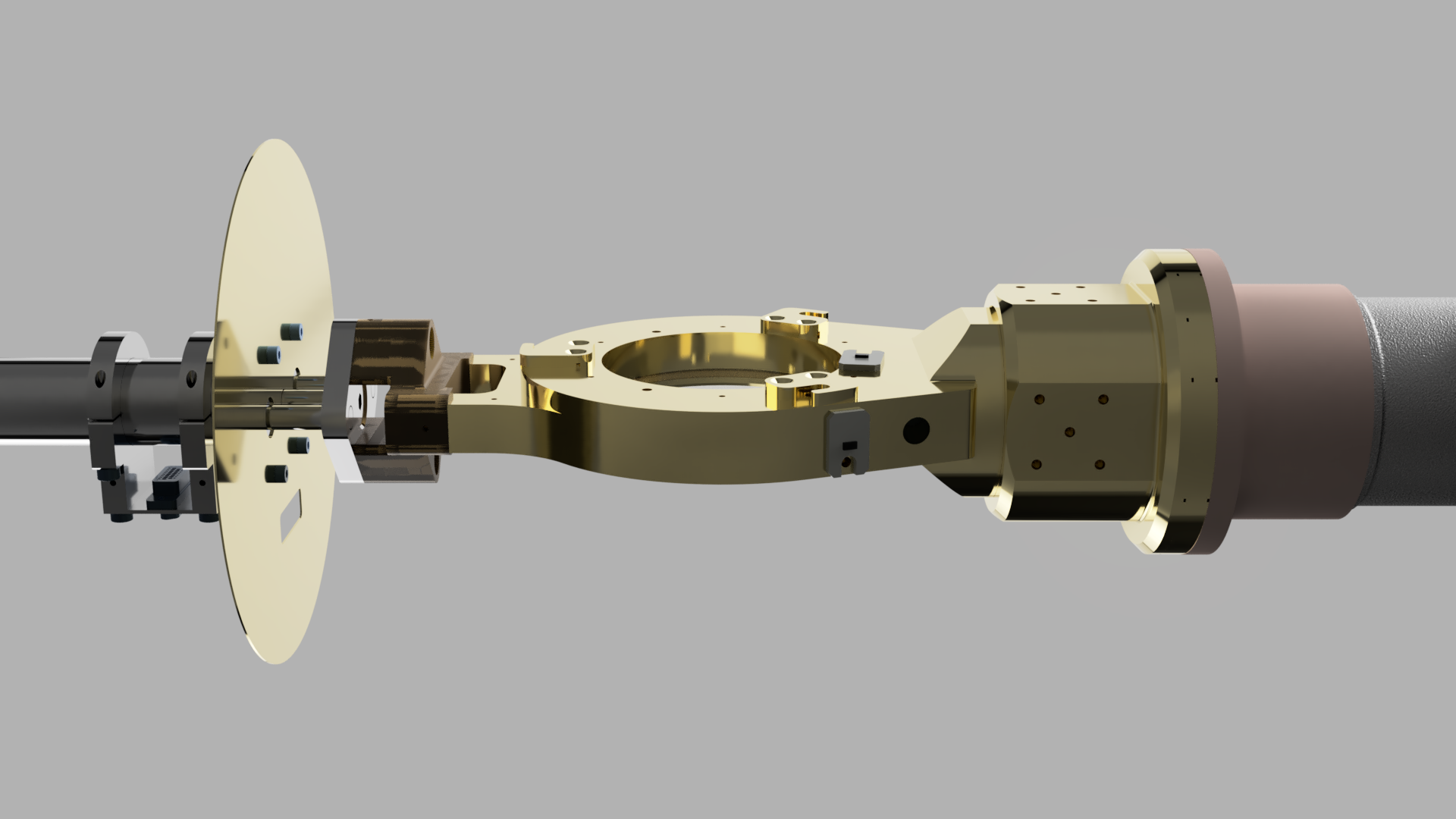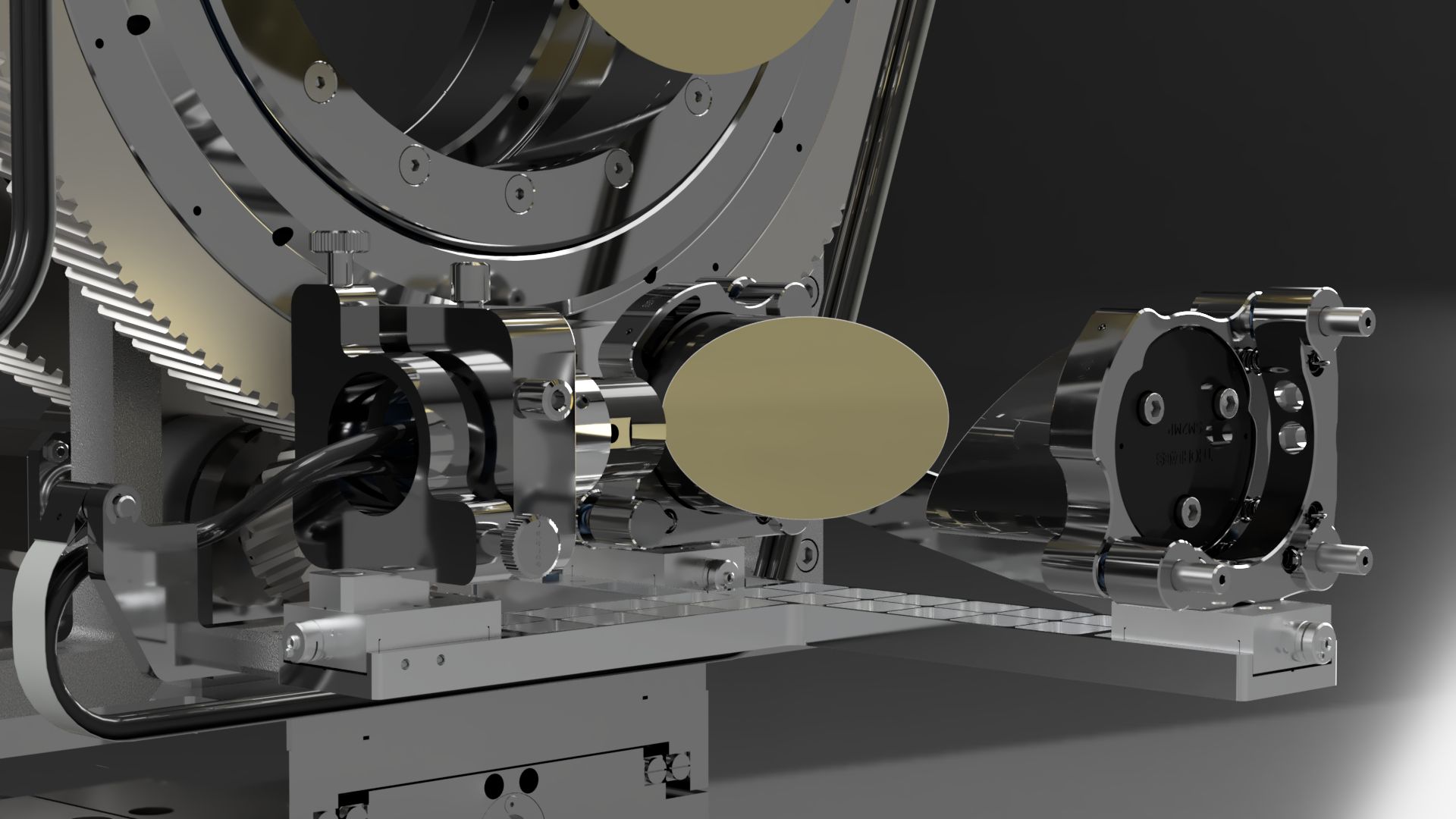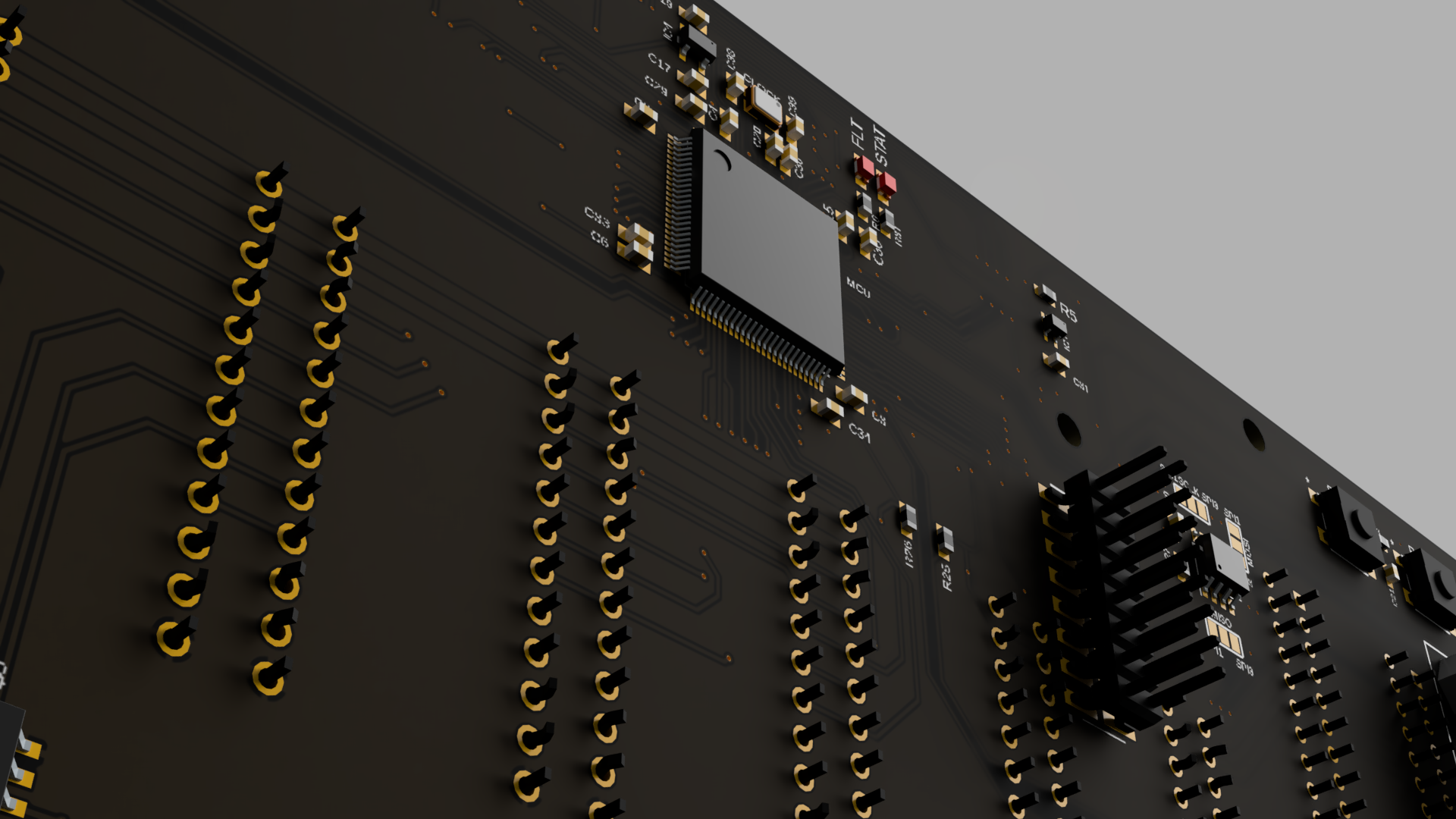COCoNuT
COCoNuT (Characteristic Observation of Cometary Nuclei using THz-spectroscopy) is an experimental setup built around the TeraFlash Pro THz-Spectrometer from Toptica.
COCoNuT is used as a proof of concept to lay the groundwork for a THz-Spectrometer on a future space mission to a comet. The goal is to establish an approach to determine the physio-chemical properties of cometary nuclei and their relevance to proto-planet formation. A complete description of the instrument has been published with AIP Review of Scientific Instruments..

The system is designed as a main vacuum chamber with a smaller pre (loading) chamber. The two chambers are separated with a gate valve.
The main chamber can be pumped and cooled down while the sample is loaded into the pre-chamber. To prevent flooding and warming up the main chamber while loading the sample, we can pump down the pre-chamber before inserting the sample on the sample holder into the main chamber.
A goniometer holds the transmitter and receiver antenna of the time domain THz-spectrometer. This allows measuring the sample at multiple different phase angles and switching between transmission and reflection measurements.
THz-Spectroscopy
While spectroscopy at infrared wavelengths and radar has been conducted for a long time. It has only been in the last decades that the THz gap has been closed and the possibility to investigate the properties of materials in this frequency range exploited. The fundamental principle of time domain spectroscopy is to create a THz pulse and measure it in the time domain. The resulting trace can then be transformed into Fourier space by using a fast fourier transform method (FFT) to obtain a frequency spectrum.
THz spectroscopy is usually conducted at frequencies ranging from 0.1 THz to 10 THz, with the corresponding wavelengths ranging from 3 mm to 300 μm.

COCoNuT is built around a TeraFlash Pro THz spectrometer by Toptica. The antennas are manufactured by Fraunhofer-Heinrich-Hertz-Institut (HHI).
A custom control software is used to control the spectrometer. The graphical user interface (GUI) is written in Rust, the control script in Python.
Electronics
The entire setup is controlled by a centralized node, the electronics unit (ELU). It is a custom built around an STM32F405 ARM microcontroller and controls the stepper motors, pumps, valves and reads out temperatures and pressures during measurements. The firmware is written in Rust.
Special thanks to our engineering department, especially Mathias Brändli for his tremendous work on COCoNuT.





